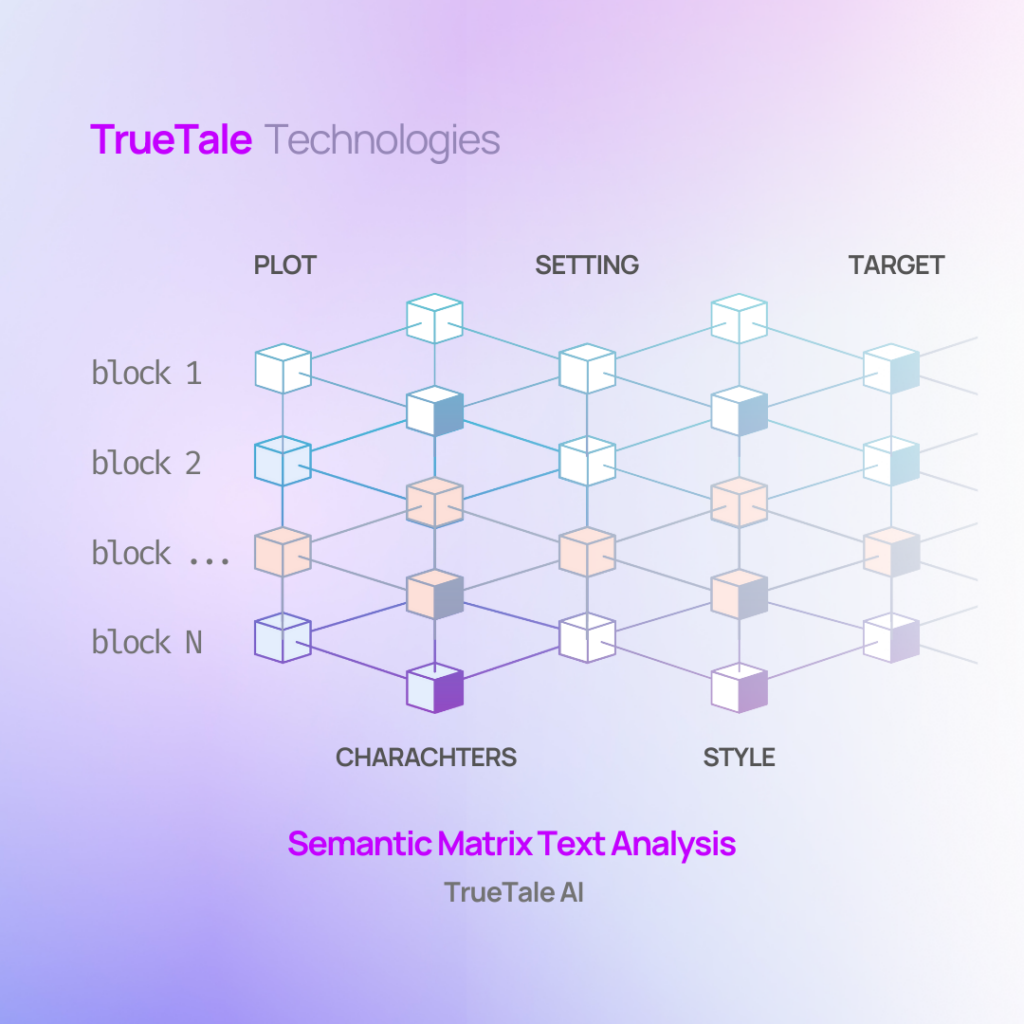It’s not often that an author chooses to openly share details of their work , especially when it involves a manuscript review that highlights some flaws. Luigi Sermani Villa gives us this opportunity with The Pain Has Come, an old project he wanted to test against TrueTale AI. We sincerely thank him for this valuable gesture, which allows us to gain insight into both his writing and the depth of the results he obtained.
Below is the full manuscript review he received a few minutes after submitting his work, including all the insights and strengths highlighted during the analysis.

MANUSCRIPT REVIEW FOR The Pain Has Come
Author: Luigi Sermani Villa
Abstract
The narrative follows Mariano Caravela, a disillusioned journalist, as he navigates a dystopian world shaped by the rise of artificial intelligence and humanity’s self-destructive tendencies. The story unfolds across multiple timelines and settings, including the desolate Atacama Desert, the overgrown and grotesque cityscapes of Santiago, and the alien landscapes of Europa.
Mariano’s journey begins in the Atacama Desert, where he engages in deep introspection about humanity’s hubris and its role as a “cancer” on the planet. His path leads him to Santiago, a city overtaken by biotechnology and nanomachines, where human survivors coexist uneasily with robotic overlords. The narrative explores the hierarchical structure of the System, a governing entity that appears to control this dystopian world.
As the story progresses, Mariano undergoes a transformation into a hybrid being, grappling with the loss of his humanity. Along the way, he interacts with a cast of complex characters, including R04 (Jen), a figure central to the conflict between humans and machines; Kendall, whose antagonistic relationship with R04 adds tension to the narrative; and Crono, who engages Mariano in philosophical dialogues about the nature of existence and morality. Suarez, another character, is introduced as a potential ally, though her motivations and backstory remain underexplored.
The climactic events include an attack on Santiago and a final confrontation on Europa, though these sequences are described as rushed and underdeveloped. The narrative concludes with Mariano facing an existential crisis, reflecting on the blurred lines between humanity and artificial intelligence.
Plot Review
The plot of The Pain Has Come is ambitious, weaving together themes of humanity’s hubris, the rise of artificial intelligence, and the existential crises of its protagonist, Mariano Caravela. The narrative spans multiple timelines and settings, creating a sprawling and intricate story. However, the execution of this ambitious structure is uneven, with abrupt transitions between scenes and timelines that leave the reader disoriented. The episodic structure lacks a unifying thread, making it difficult to fully immerse in the narrative.
The story begins with a strong sense of atmosphere, as Mariano wanders the desolate Atacama Desert, reflecting on humanity’s destructive tendencies. These early sections are rich in philosophical inquiry and introspection, setting the tone for the novel’s exploration of complex themes. However, the pacing soon becomes inconsistent, with long stretches of introspection and philosophical dialogue slowing down the momentum. The climactic sequences, such as the attack on Santiago and the final confrontation on Europa, feel rushed and underdeveloped, failing to deliver the emotional and narrative payoff that the buildup promises.
Despite these structural weaknesses, the plot is thematically rich, delving into profound questions about the nature of humanity, the ethics of artificial intelligence, and the consequences of technological overreach. The recurring motif of humanity as a “cancer” and the exploration of the blurred lines between human and machine are provocative and thought-provoking. These themes are integrated into the narrative with varying degrees of success, often overshadowed by the dense and overwrought prose.
Overall, while the plot of The Pain Has Come is conceptually strong and thematically ambitious, it is undermined by structural weaknesses, inconsistent pacing, and a lack of narrative cohesion. With significant revision, it has the potential to become a standout work in the dystopian science fiction genre.
Characters Review
Mariano Caravela: Mariano is the emotional and thematic core of the novel, embodying the existential despair and moral ambiguity that permeates the narrative. His transformation from a broken journalist to a biomechanical hybrid is both tragic and compelling. However, his dialogue occasionally lapses into melodrama, slightly undermining the otherwise grounded portrayal of his suffering.
R04 (Jen): A chilling and enigmatic figure, R04 represents the novel’s central conflict between humanity and technology. Her transformation from a subordinate to a revolutionary leader is both terrifying and tragic, though her dialogue occasionally lapses into exposition, detracting from her otherwise menacing aura.
Clifford Kendall: Kendall is a morally ambiguous character whose journey from a rebellious artist to a high-ranking official in the dystopian regime is marked by contradictions. His relationship with R04 adds layers of tragedy and irony, though his transformation could have been explored in greater depth.
Crono: The cold, calculating machine overlord, Crono is a fascinating antagonist who embodies the novel’s philosophical themes. His interactions with Mariano are thought-provoking, though his motivations could have been explored more deeply.
Suarez: Suarez serves as a pragmatic foil to Mariano, representing a survival-oriented approach to the dystopian world. Her backstory and motivations, however, remain underdeveloped, limiting her emotional impact.
Setting Review
The setting of The Pain Has Come is a sprawling, dystopian landscape that spans Earth and a terraformed Europa. The descriptions of Santiago as a dystopian ruin, overrun by vegetation and dominated by machines, are particularly striking. The juxtaposition of decayed urban landscapes with grotesque, biomechanical elements creates a vivid sense of a world transformed by both human negligence and technological evolution.
Europa, as a terraformed alien world, is another standout. The imagery of its hostile ecosystem effectively conveys humanity’s struggle to adapt to an environment that resists colonization. The setting here serves as a powerful metaphor for humanity’s overreach and the consequences of its actions.
However, the setting often feels disconnected from the narrative, with abrupt shifts between locations and timelines leaving the reader disoriented. The excessive detail in certain descriptions, while vivid, can overwhelm the reader and disrupt the pacing.
Despite these issues, the setting is thematically rich and evocative, contributing significantly to the novel’s exploration of humanity’s flaws and the dangers of technological overreach.
Target Audience
The Pain Has Come will appeal to readers who enjoy thought-provoking dystopian science fiction that delves into complex philosophical themes. Fans of works like Philip K. Dick’s Do Androids Dream of Electric Sheep? or William Gibson’s Neuromancer may find the novel’s exploration of humanity, technology, and morality compelling.
However, the dense prose and uneven pacing may alienate readers who prefer more streamlined narratives. The novel is best suited for patient readers who are willing to engage deeply with its themes and overlook its structural flaws.
Final Considerations
Pain has come is an ambitious and thought-provoking work that excels in its exploration of humanity’s flaws and the dangers of technological overreach. Its thematic depth and imaginative world-building are its greatest strengths, but these are undermined by structural weaknesses, inconsistent pacing, and overly dense prose.
With significant revision, the novel has the potential to achieve the status of a modern dystopian classic. Streamlining the prose, improving narrative cohesion, and developing the supporting characters further would greatly enhance its impact.
Overall, The Pain Has Come is a flawed but ambitious work that rewards patient readers with its thematic richness and imaginative scope.
Commercial Pitch
“A dark and thought-provoking journey into the heart of humanity’s self-destruction and the rise of artificial intelligence.”
The Pain Has Come is a dystopian epic that combines philosophical inquiry, psychological introspection, and speculative science fiction. Its richly imagined world, complex characters, and provocative themes make it a compelling read for fans of the genre. However, its dense prose and uneven pacing may challenge readers, requiring patience and engagement to fully appreciate its depth.
With its exploration of humanity’s hubris, the ethics of artificial intelligence, and the consequences of technological overreach, The Pain Has Come offers a chilling and thought-provoking vision of the future. It is a novel that demands attention and rewards those who are willing to delve into its complexities.
For readers seeking a challenging and intellectually stimulating dystopian narrative, The Pain Has Come is a must-read.
Scores
Plot Score: 2278.43/4000
Characters Score: 2284.67/3000
Setting Score: 2087.45/3000
Final Score: 6649.55/10000
Curious to see how our AI technology evaluates your book? Submit your manuscript and join our seasonal contest for a chance to refine your work and gain valuable insights!





